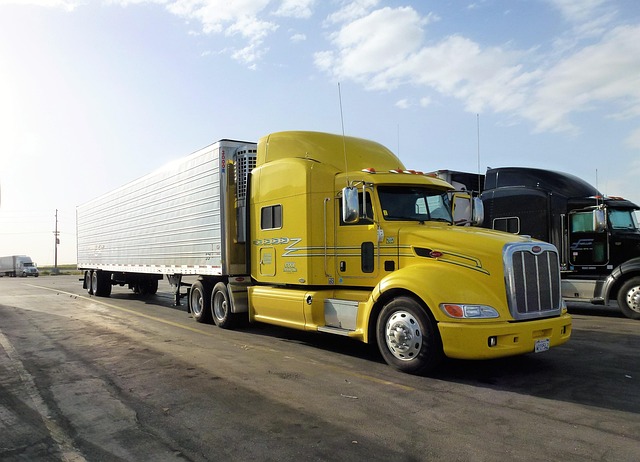Learn how to register your car in California with our comprehensive guide. This step-by-step process covers everything from understanding the requirements for car registration, gathering necessary documents for DMV VIN verification, preparing your vehicle for inspection and title transfer, to completing the DMV registration process. We’ll also walk you through post-registration steps and considerations. Ensure a smooth experience by following these essential instructions tailored for California residents.
- Understand the Requirements for Car Registration in California
- Gather Necessary Documents for DMV VIN Verification
- Prepare Your Vehicle for Inspection and Title Transfer
- Complete the DMV Registration Process Step-by-Step
- Post-Registration: Important Steps and Considerations
Understand the Requirements for Car Registration in California

Before registering your car in California, it’s crucial to understand the requirements set by the Department of Motor Vehicles (DMV). One key step is ensuring that your vehicle meets all safety and emissions standards. This includes a comprehensive inspection that covers lights, brakes, tires, and other critical components. Additionally, the DMV requires a Vehicle Identification Number (VIN) verification to confirm the vehicle’s identity and history, which can be efficiently handled by using a mobile VIN verifier or undergoing a mobile VIN inspection.
A valid car insurance policy is another essential prerequisite for registration. This not only meets legal requirements but also demonstrates your commitment to responsible driving. Moreover, gathering necessary documents such as proof of ownership, title transfer, and any relevant registration fees is vital. With these steps taken care of, you’ll be well on your way to completing the car registration process smoothly in California.
Gather Necessary Documents for DMV VIN Verification

Before heading to the DMV for car registration, make sure you have all the essential documents ready. The most crucial piece is the Vehicle Identification Number (VIN) verification. This process requires a valid and accurate VIN, which can typically be found on the vehicle’s registration certificate or on the label located on the driver’s side door frame. Additionally, bring along your driver’s license, proof of insurance, and any other required documents specified by the California DMV.
For a smoother experience, consider using a mobile vin inspection or a mobile vin verifier service. These services can provide immediate and accurate VIN verification, saving you time and effort. Having your documents in order, including a confirmed and valid VIN, will significantly contribute to a quick and successful car registration process at the California DMV.
Prepare Your Vehicle for Inspection and Title Transfer

Before heading to the California DMV for registration, ensure your vehicle is ready through a thorough preparation process. This includes obtaining all necessary documents, such as proof of ownership and insurance, and ensuring your vehicle passes the required safety inspections. One crucial step is to have your Vehicle Identification Number (VIN) verified, which can be done easily with a mobile VIN verifier or during a simple dmv vin verification process. This ensures that your vehicle’s details match the records, preventing any registration issues.
During this preparation, check for any outstanding issues related to previous owners or registrations. A mobile VIN inspection or even a quick online search can help clear any discrepancies. By addressing these matters beforehand, you streamline the title transfer process at the DMV, making the entire car registration experience in California more efficient and smooth.
Complete the DMV Registration Process Step-by-Step

Completing your car’s registration with the DMV involves a straightforward process that requires careful attention to detail. First, gather all necessary documents, including proof of insurance, vehicle ownership, and identification. Then, visit a nearby California DMV office or use their online services for convenience. If you prefer a faster alternative, consider scheduling a mobile vin inspection where a verifier will conduct a thorough check using your car’s unique VIN (Vehicle Identification Number).
Follow these steps:
1. Apply Online: Start by creating an account on the official DMV website and filling out the registration form. You’ll need to input details like your personal info, vehicle specs, and insurance information. After submission, you might be asked to schedule a visit or conduct a mobile vin verification for final inspection.
2. Submit Documents: Bring all required documents, ensuring they are valid and up-to-date. A licensed mobile vin verifier can assist in this process by performing the VIN verification on your behalf, providing peace of mind that all details match with the DMV’s records.
3. Inspection & Approval: If opting for a mobile inspection, a professional will examine your vehicle’s VIN, confirming its authenticity and matching it with the DMV database. Once approved, you can finalize registration, including any required fees.
Post-Registration: Important Steps and Considerations

After successfully registering your vehicle with the California Department of Motor Vehicles (DMV), there are several crucial steps and considerations to ensure a smooth ownership experience. One essential post-registration task is to verify the Vehicle Identification Number (VIN) through a reliable method, such as using a mobile vin verifier or conducting a VIN inspection. This process ensures that your vehicle’s history is accurate and up-to-date, which is critical for safety and legal compliance.
Additionally, keeping your registration documents secure and up-to-date is vital. Regularly review your insurance coverage to ensure it aligns with your vehicle’s current value and requirements. Promptly renew your registration before the expiration date to avoid penalties or disruptions in daily use. These proactive measures will help you navigate any potential challenges and maintain a seamless connection with California’s DMV regulations.
Registering a car in California is a straightforward process that requires understanding specific requirements, gathering essential documents, and completing a series of steps. From ensuring your vehicle meets safety standards through DMV VIN verification to transferring ownership, each phase is designed to maintain the state’s robust automotive regulations. By following these guidelines carefully, you’ll not only comply with California laws but also ensure a smooth transition for your new vehicle.
